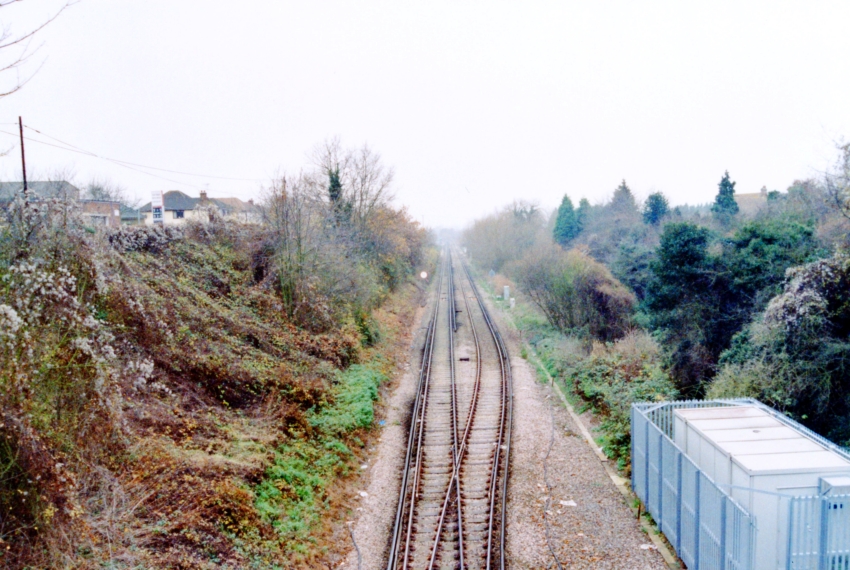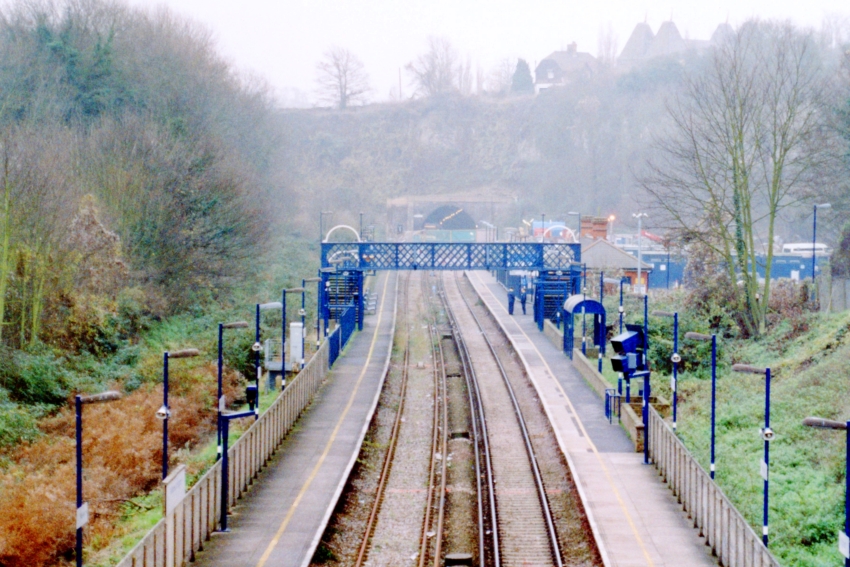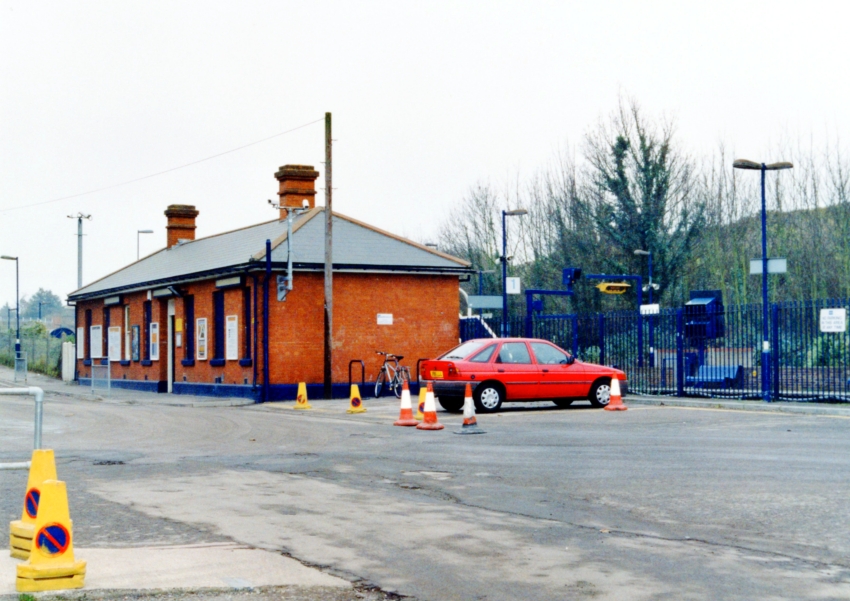Higham
On 18th January 2004, both Higham and Strood Tunnels were closed to rail traffic for exactly one year, to allow strengthening work to take place. By the year 2000, trains through the tunnels were restricted to a maximum speed of 20 MPH, in response to a series of chalk falls and landslides. The two tunnel sections combined are 3,861-yards long, of which 2,156-yards were lined with brick at the time. Given this was formerly the course of the Thames & Medway Canal, the floor of the tunnel was at water level, which caused frequent drainage problems.
The works cost £35,000,000 and involved re-lining both tunnel bores with concrete, to prevent further chalk falls and make them watertight. For the duration of the works, platform 2 at Higham was taken out of use and the track layout singled; over the next twelve months, all passenger services reversed at platform 1. Onward travel to Strood was by means of a shuttle bus which departed from the forecourt on the "up" side of the station.
Track relaying through the renewed tunnels began on 1st November 2004. Works were completed on schedule, through traffic to Gillingham re-commencing on 18th January 2005. Journey times were accelerated by the lifting of the 20 MPH speed restriction through the tunnel bores, a line speed of 70 MPH now being possible.
12th December 2004

A set of points were installed at the London end of the station, allowing platform 2 to be taken out of use and all traffic focused on the "up" side. This view is looking towards Hoo Junction. © David Glasspool
12th December 2004

Looking in the Strood direction, it is evident that the "down" track remained in place during the works. Note the barricade across the tunnel portal and the line of lights disappearing into the distance within the bore. The footbridge had a barrier across the entrance to the steps, preventing passage to the then disused platform 2. © David Glasspool
12th December 2004

The station building looked smart, albeit with boarded up windows. The traffic cones were there to ensure parked cars did not prevent the shuttle bus from turning on the forecourt. © David Glasspool
Return to the Kent Rail Homepage or alternatively, check for Updates.
Website & Copyright information - Links - Contact the Webmaster
